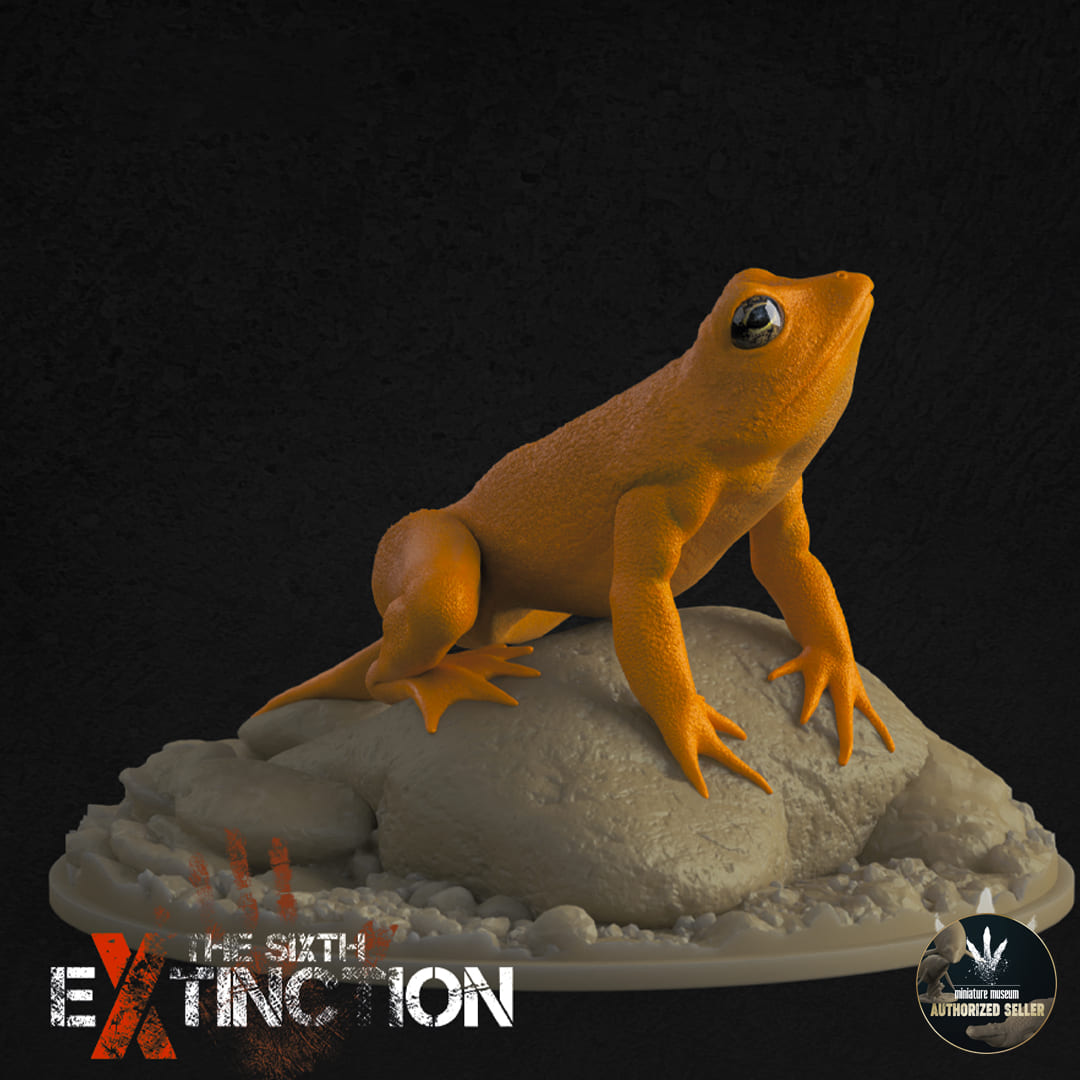





Incilius periglenes
Do you want another scale?
Contact us and we will make it possible!
How will you receive your replica?
In the unprimed and primed variants, you will receive the complete replicas except for the large models, where you will receive an assembly kit.
In the hand-painted variant, the replicas will be delivered complete.
How does the painting service work?
We created a private chat for you where you will have direct communication with our painter , being able to choose your preferred color schemes and follow the hand painting process closely.
Pairs well with

Incilius periglenes
If you have any questions, you are always welcome to contact us. We'll get back to you as soon as possible, within 24 hours on weekdays.
Shipping Information
Visit our shipping policy page to find all the information.
Customer Support
Give us a few details and we’ll offer the best solution. Connect by chat or email.
We are available 24/7.
FAQ’s
Visit our FAQ's page to find answers to common questions.
Contact Us
We'd love to hear from you. We are here to help. Visit our contact page to send us a message.
Product details
Description and Morphology
Incilius periglenes was known for its distinctive and striking appearance, especially in males.
Coloration: The males were a bright, metallic gold color, which is where their common name comes from. Females, on the other hand, had a more varied coloration, ranging from green with black spots to shades of yellow and red. This notable difference in sexual coloration made males particularly easy to identify during the mating season.
Size: The size of the golden toad was relatively small, with males measuring around 5 cm in length. Females were generally larger than males.
Skin: The skin of Incilius periglenes was smooth and shiny, without the prominent parotid glands found in many other toad species. This characteristic, along with its coloration, gave it a unique appearance among the amphibians of its region.
Habitat and Ecology
The Monteverde golden toad inhabited the cloud forests of the Tilarán Mountain Range, at elevations of approximately 1,500 meters above sea level. This habitat is characterized by high humidity, moderate temperatures and dense vegetation.
Reproduction: Reproduction of Incilius periglenes occurred during the rainy season, when the toads congregated in small temporary pools to mate. The males would group together in these bodies of water and compete for females, using their calls to attract them. The females laid large quantities of eggs in the water, which were fertilized externally by the males.
Diet: Like other toads, Incilius periglenes was insectivorous. Their diet consisted mainly of insects and other small invertebrates that they found on the forest floor.
Decline and Extinction
The decline of the golden toad was rapid and drastic. Despite being abundant in the 1970s, the population began to decline rapidly in the mid-1980s. The causes of its extinction are not completely clear, but several factors are believed to have contributed to its disappearance:
Climate Change: Alterations in weather patterns may have affected the golden toad's habitat, making the moisture conditions necessary for its reproduction less frequent.
Diseases: Chytridiomycosis, a fungal disease caused by the fungus Batrachochytrium dendrobatidis, has been implicated in the decline of many amphibian populations around the world and may have played a role in the disappearance of Incilius periglenes.
Habitat Loss: Although less likely due to the protection of the area where it lived, any habitat degradation could have negatively affected the populations.
Importance and Legacy
The Monteverde golden toad has become a symbol of the global amphibian crisis and biodiversity loss. Their disappearance highlights the vulnerability of mountain ecosystems and the urgent need for conservation and study of endangered species. Despite its extinction, Incilius periglenes remains a reminder of the importance of preserving our natural environment and the fragility of many species in the face of environmental changes.
Approximate measurements of the Golden Toad:
- Full 1:1 Scale
- Length 50 mm
- Height 35 mm
- Width 37 mm
- Snout-cloaca 45 mm
Information about aftershocks
Collector's item ; Hyper-realistic replica, highly detailed and with a high degree of scientific precision.
Made to scale, prototyped in resin and with a scenic base in most of the models offered. If you like miniatures, both for collecting and for painting, we offer you a wide variety of scale replicas; All of them related to dinosaurs, extinct prehistoric fauna and current fauna.
So if you love dinosaurs and animals as much as we do, this is your favorite store to collect and paint them :)
We are authorized distributors of all the replicas and figures we offer. We use 3D printers with 8K - 14K resolution, and high-quality resins with additives to improve hardness and flexibility, thus offering replicas of impeccable quality.
Different scales will be used to make the replicas (depending on the size of the species), although we are open to making other suggested scales upon request as long as they fit in our printing trays, for which you will have to contact us via email and request the required size.
Replicas are supplied with the option of airbrush priming in dark grey. If you require another colour, please let us know which one you prefer in the box with special instructions for the seller. Without priming, we do not guarantee that the resin will accept paint.
We also offer the option of choosing a professionally painted replica, which is agreed upon throughout its development with the painter, through a private chat available.
Complete replica (one piece): We supply complete replicas in those models that are small, and models that are medium, large or not very bulky, will have the prerogative of being presented as a complete replica or assembly kit as the case may be.
Complete replicas will be supplied separately from their base.
Replica assembly kit: We supply replicas whose models are large, very large or bulky, only with this option.
The indicated replicas (generally composed of base, head, body and tail) will come prepared for the subsequent assembly that will be required by the client, by sanding, putty, adhesive or technique chosen by the client.
All replicas are thoroughly inspected before shipping and will be carefully packaged to prevent damage during transport.
Information about the models
The poses of the models aim to represent each character in the most scientifically viable way, thus revealing the life and customs of prehistoric and modern fauna.
Each character has its own personality and develops in different life scenarios; birth, adolescence and play, hunting, feeding, fighting, courtship, death and many other scenes from their daily life, always from the creative perspective of their designers.
Handmade
All orders are individually prepared on the cutter for subsequent prototyping, obtaining a resin part that will require post-processing by manual and ultrasonic cleaning, support removal, ultraviolet curing, labeling and packaging.

We are authorized distributors
We offer both our own physical replicas and those that have been modeled by many of the best 3D designers, in order to offer you the greatest possible variety.
Frequently Asked Questions
If you have any questions about products, orders or shipping, please read our FAQ page to learn more.
